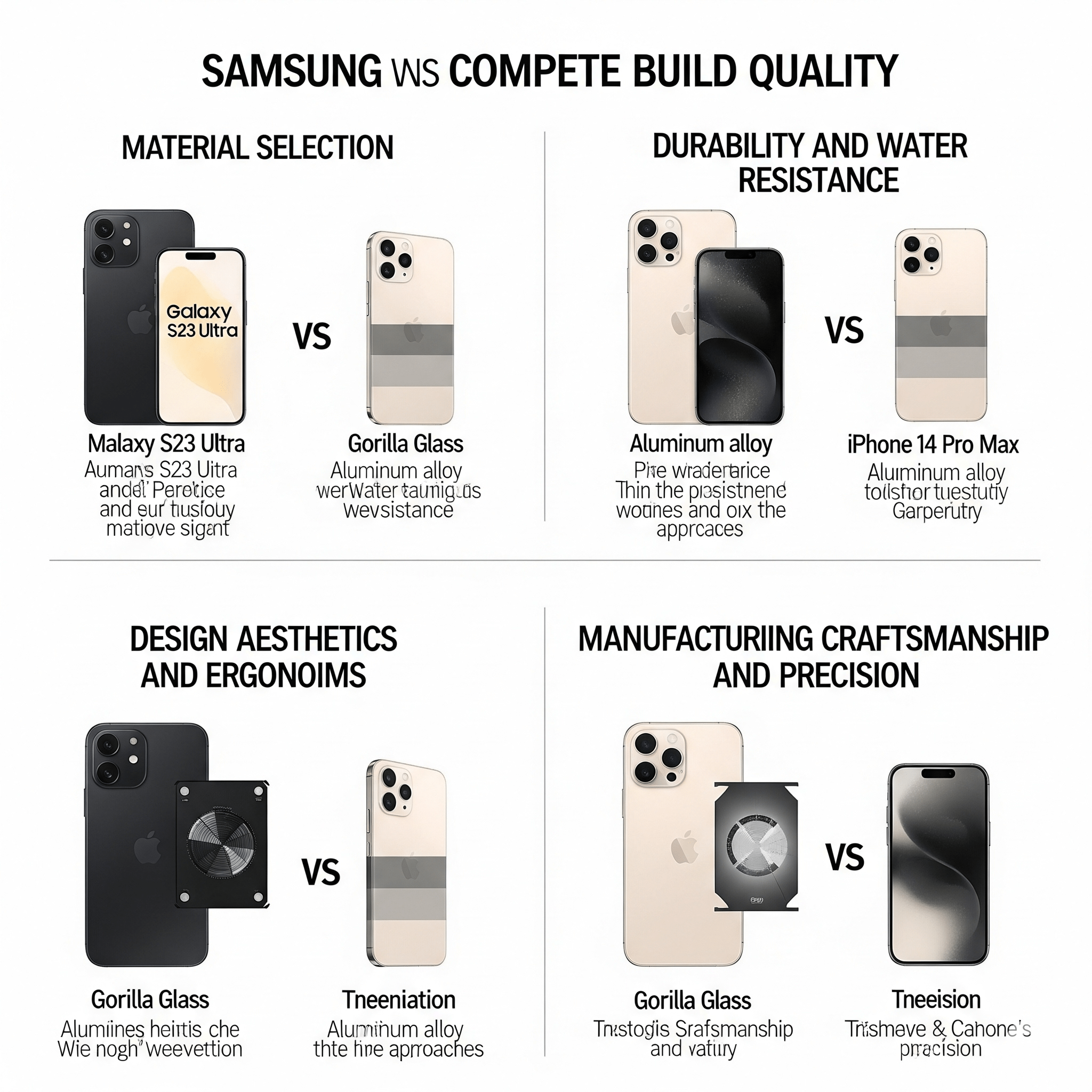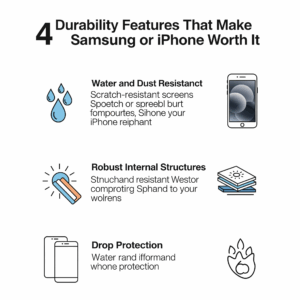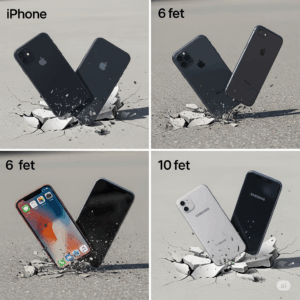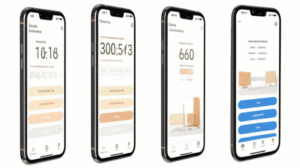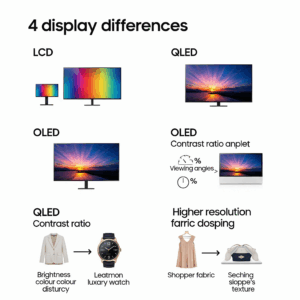When it comes to premium smartphones, Samsung and Apple have consistently set the benchmark. Their flagship devices are not only technological powerhouses but also represent the pinnacle of industrial design and durability. For Shopify eCommerce merchants—especially those selling accessories, parts, or mobile tech—the battle between these two giants offers valuable insights into what customers value most.
Here are 4 key ways Samsung and Apple compete on build quality in 2025, and how it directly impacts your Shopify store strategy.
1. Material Selection and Finish
Apple continues to favor aerospace-grade aluminum and ceramic shield glass, known for its strength and scratch resistance. With the iPhone 17 series, Apple also reintroduced titanium frames, giving devices a high-end, lightweight feel that appeals to premium-conscious consumers.
Samsung, on the other hand, uses Armor Aluminum and Gorilla Glass Victus 3, with select models offering foldable glass displays. The premium finishes give Samsung devices a sleek, modern appearance with practical durability—especially in their foldable series like the Galaxy Z Fold6.
For Shopify merchants selling phone cases or skins, understanding these material differences ensures compatibility and smarter product bundling.
2. Durability Testing Standards
Apple and Samsung both invest heavily in military-grade durability tests, including drop resistance, water resistance (IP68 for both), and pressure endurance.
However, Samsung’s foldables now undergo over 500,000 folding cycles, showcasing an emphasis on hinge durability and mechanical innovation. Apple doesn’t yet offer a foldable but emphasizes seamless unibody construction for long-term reliability.
If you run a Shopify store selling device insurance, repair kits, or rugged accessories, these build-quality benchmarks help guide your marketing claims and customer education.
3. Thermal and Structural Engineering
Apple’s A17 Pro chip and tightly integrated ecosystem allow for minimal internal heat dissipation needs, contributing to its compact, rigid design.
Samsung leverages advanced vapor chamber cooling across the S25 and Fold series, resulting in better thermal management during gaming or heavy multitasking—though this may slightly affect internal structural compactness.
Shopify sellers offering cooling accessories, external fans, or game controllers should align their offerings with these brand-specific thermal performance characteristics.
4. Sustainability and Repairability
In 2025, both brands have taken major steps toward sustainable manufacturing. Apple uses 100% recycled aluminum in all iPhone chassis, while Samsung incorporates recycled ocean plastics and glass into their devices.
When it comes to repairability:
Apple still maintains tighter control over official repair parts and services.
Samsung offers more accessible self-repair options and partnerships with iFixit.
For eCommerce merchants on Shopify selling replacement parts, eco-friendly accessories, or refurbished phones, this aspect of build quality is becoming a powerful differentiator for buyers.
Why Build Quality Matters for Shopify Merchants
Smartphone build quality isn’t just a tech spec—it’s a key influence on product fit, return rates, upsell potential, and customer satisfaction. Whether you’re building a niche brand around mobile accessories or targeting eco-conscious consumers, understanding how Apple and Samsung compete helps you position your products more effectively.
Explore how Shopify helps you launch or scale your business with responsive themes, built-in mobile support, and fast-loading product pages. Start your store or learn more at Shopify.
Final Thoughts
The battle between Apple and Samsung goes beyond innovation—it’s a strategic war of materials, endurance, and user experience. By understanding how each brand leads on build quality in 2025, Shopify entrepreneurs can make smarter inventory, design, and marketing decisions.
Want to tailor your Shopify store for iPhone and Samsung shoppers? Optimize your listings, include build-specific product filters, and stay aligned with the evolving standards of mobile tech design.
